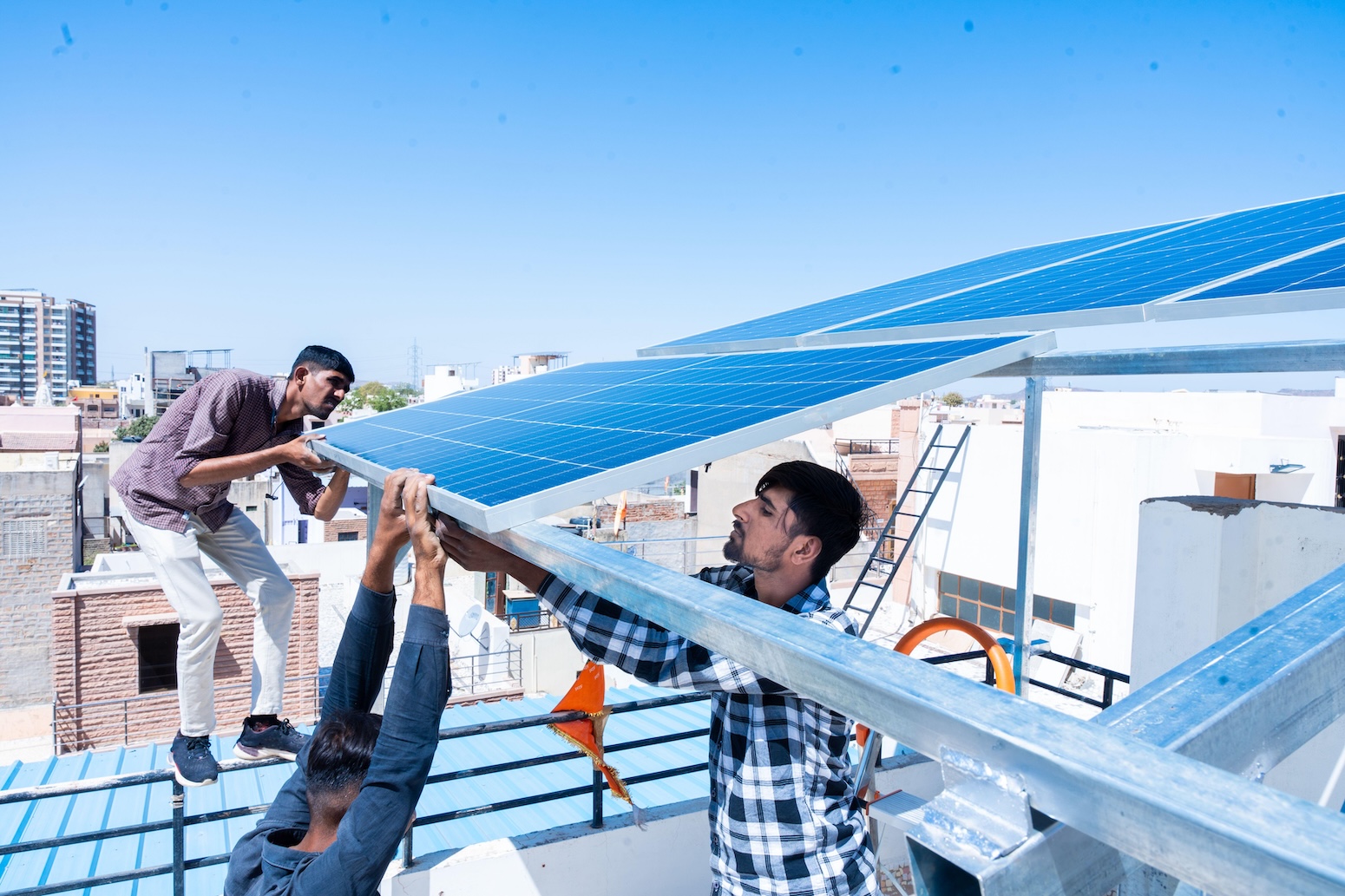Virtually every country in the world has set a target for cutting emissions under the Paris Agreement.
As part of their obligations under the climate treaty, they have also committed to regularly reporting on their efforts.
In the race to cut fossil fuel use and preserve carbon-rich landscapes, it is essential that governments understand the flows of greenhouse gases that fall within their jurisdictions.
Without reliable reporting, it will be impossible to know whether nations are living up to their Paris Agreement commitments.
As it stands, many developing countries have limited capacity for reporting emissions, despite efforts to build such capacity over two decades.
The treaty, therefore, reaffirms the importance of providing developing countries – particularly smaller and lower-income nations – with the money and technical support they need to accurately report on their emissions.
With Molly White from the Greenhouse Gas Management Institute, I set out to investigate how successful these efforts have been so far.
Our recent study, published in Climate Policy, explores 133 developing countries’ progress towards providing regular “greenhouse gas inventories” under the UN system between 1997 and 2019.
Overall, we found that more than half of the world’s developing nations, including small-island states in the Pacific and the Caribbean and several African countries, are struggling to reliably report their emissions.
They either did not improve their emissions reporting capabilities or could not be fully assessed as they did not submit greenhouse gas inventories when required.
These findings have significant implications, especially as nations gear up for the first “global stocktake” at COP28 in Dubai later this year. Emissions inventories will, ultimately, be a key part of the information feeding into this assessment of progress towards global climate goals.
Improving transparency
National greenhouse gas inventories, which record countries’ annual emissions, are one of the elements that nations have been reporting under the UN Framework Convention on Climate Change (UNFCCC) since 1992.
Under this system, developing countries are required to periodically submit inventories as part of their national communications and biennial update reports (BURs). Developed countries are obliged to report their greenhouse gas inventories every year.
However, many developing countries have still not been able to report inventories as required.
In moving to the Paris Agreement, transparency has proved a contentious topic at UN climate talks, with negotiations around how and when to report on different metrics.
Much of the discussion has centred around nations’ different capacities for reporting. Assembling reliable emissions inventories is a persistent challenge, especially for developing countries.
Under the Paris Agreement, as part of the “enhanced transparency framework”, all nations – both developed and developing – must provide emissions inventories as part of their new biennial transparency reports (BTRs), starting by the end of 2024. (Small-island states and least developed countries “have discretion” to submit theirs later.)
The Paris Agreement also emphasises the importance of capacity building and calls for international support to help those developing countries that need it.
In our research, we present a “greenhouse gas inventory capacity index” to compare how ready different nations are to produce consistent, regular and high-quality inventories.
The index is based on three components. These are: the nation’s socioeconomic and demographic conditions; the status of its national institutions for preparing inventories; and the technical skills and knowledge it has at its disposal.
Each component is assigned a score, which is then differently weighted based on expert input and combined to create the index.
This assessment is repeated for three different time periods, corresponding to different inventory reporting deadlines. As greenhouse gas reporting pre-dates the 2015 Paris Agreement, these time periods begin in 1997 and end in 2019.
There are other potentially important data sources that are not included in our assessment, simply because they are not yet publicly available. These include the amount of funding allocated for inventory production and the number of people employed to work on them, among others.
Lack of capacity
We then compare index scores over time to assess whether there have been improvements in greenhouse gas inventory capacities in different developing countries.
Our results are shown in the map below. Countries coloured in red and pink have shown little or no progress in capacity building, while those coloured in blue have been or are now in a better position to report their greenhouse gases than they used to be. The brown colour indicates countries that do not fall into any of these patterns.
Inventory capacity was either high or showed significant improvement for 64, or roughly half, of the nations we analysed.
However, the remaining 69 either did not increase their capacity or could not be fully assessed, as they failed to provide inventories during the most recent submission period.
While our assessment shows that each region consists of countries with various capacity-change patterns, a large proportion of island countries in the Pacific and a quarter of countries in Africa and the Caribbean showed limited capacity improvements over time.
Many of the nations with low capacities contribute negligible amounts of emissions to the global total. However, some countries with relatively high emissions, such as Venezuela and the Philippines, have also seen little capacity improvement.
Countries with higher capacities were more common in Europe, Latin America and much of Asia.
The countries that showed little improvement generally struggled to establish structures where multiple organisations and information sources feed into the monitoring and analysis of greenhouse gas emissions.
Other challenges include lack of wider statistical and scientific capacity within countries. This is often beyond the scope of greenhouse gas inventory capacity-building projects, which tend to focus solely on the organisations and people involved in compiling inventories.
Impact on quality
Perhaps unsurprisingly, we also find that low greenhouse gas inventory capacities led to low-quality inventories.
Unlike capacity, quality can be defined by internationally accepted principles set out by the Intergovernmental Panel on Climate Change (IPCC), namely transparency, accuracy, completeness, comparability and consistency. We also assessed “promptness” as this is required under the Paris Agreement.
“Transparency” refers to how well information is provided to explain the methodologies used. “Completeness” indicates the proportion of total emissions categories being reported.
We believe that these principles are relatively easy to address and, indeed, they presented fewer problems for developing country inventories, even with limited capacity. This is because these aspects are largely in the hands of the individuals tasked with compiling the inventories.
On the other hand, the other three quality aspects – promptness, accuracy and consistency – are more complex and require additional capacity across governments and institutions. (Comparability could not be assessed due to a lack of information in submitted inventories.)
For example, how promptly an inventory is submitted may depend on the involvement of ministries, agencies and other actors across a lengthy compilation process.
How consistently an inventory is prepared may depend on the availability of time-series data, which is closely linked with national statistical capacity.
Implications for Paris
Two major concerns arise from our study, which marks the first ever effort to assess global capacity for reporting greenhouse gas emissions under the UN system.
First, existing inventory capacity and quality gaps will inevitably affect, to various degrees, a country’s ability to prepare, track progress and update its climate targets (nationally determined contributions – NDCs) and policies.
This could also limit the ability of these inventories to effectively track collective progress through the Paris Agreement’s global stocktake every five years.
Our research suggests there may be a need to explore the use of other information sources to replace inventories, in the cases where they are still likely to be missing. For example, regional emissions estimates could be used as a proxy for national estimates from low-capacity countries.
Second, despite continuous efforts over the past few decades, inventory capacity remains low in a number of developing countries. Increasing evaluation of past capacity-building efforts and learning what did and did not work could improve future capacity-building efforts.
There is also a need to understand and communicate how climate information, such as inventories, can actually benefit countries in pursuing their climate policies.
Improved transparency is meant to help countries move forward with their own climate action. Therefore, aligning more with national domestic priorities than international requirements alone could be an important goal for future inventory capacity-building projects.
In the future, further global assessments of capacity building would help to build a stronger evidence base for international discussions. As we found, such assessments would benefit from improved data availability – and this could be addressed under the Paris Agreement.
Umemiya, C. & White, M. (2023) National GHG inventory capacity in developing countries – a global assessment of progress, Climate Policy, doi: 10.1080/14693062.2023.2167802
Sharelines from this story




















Discussion about this post